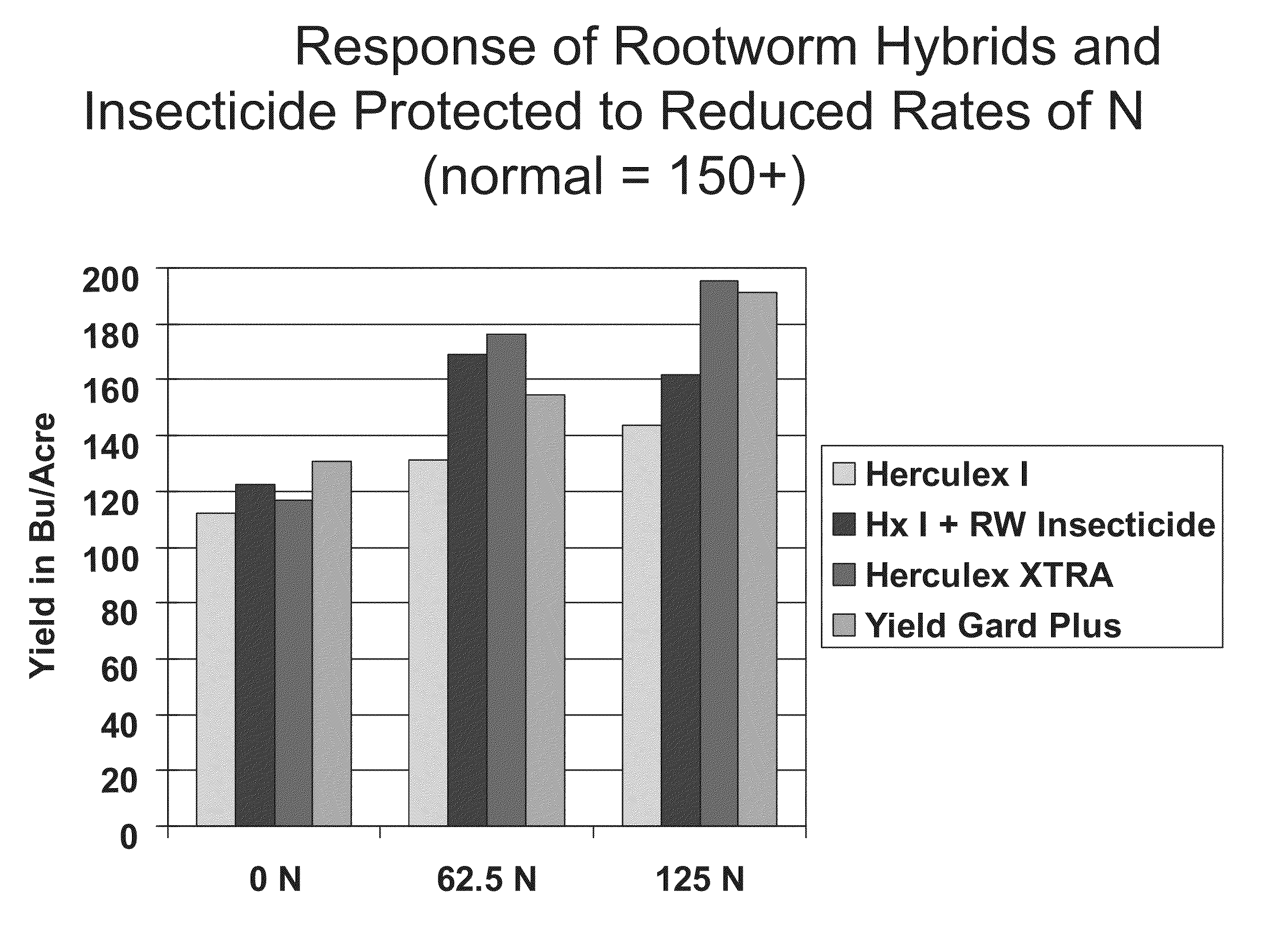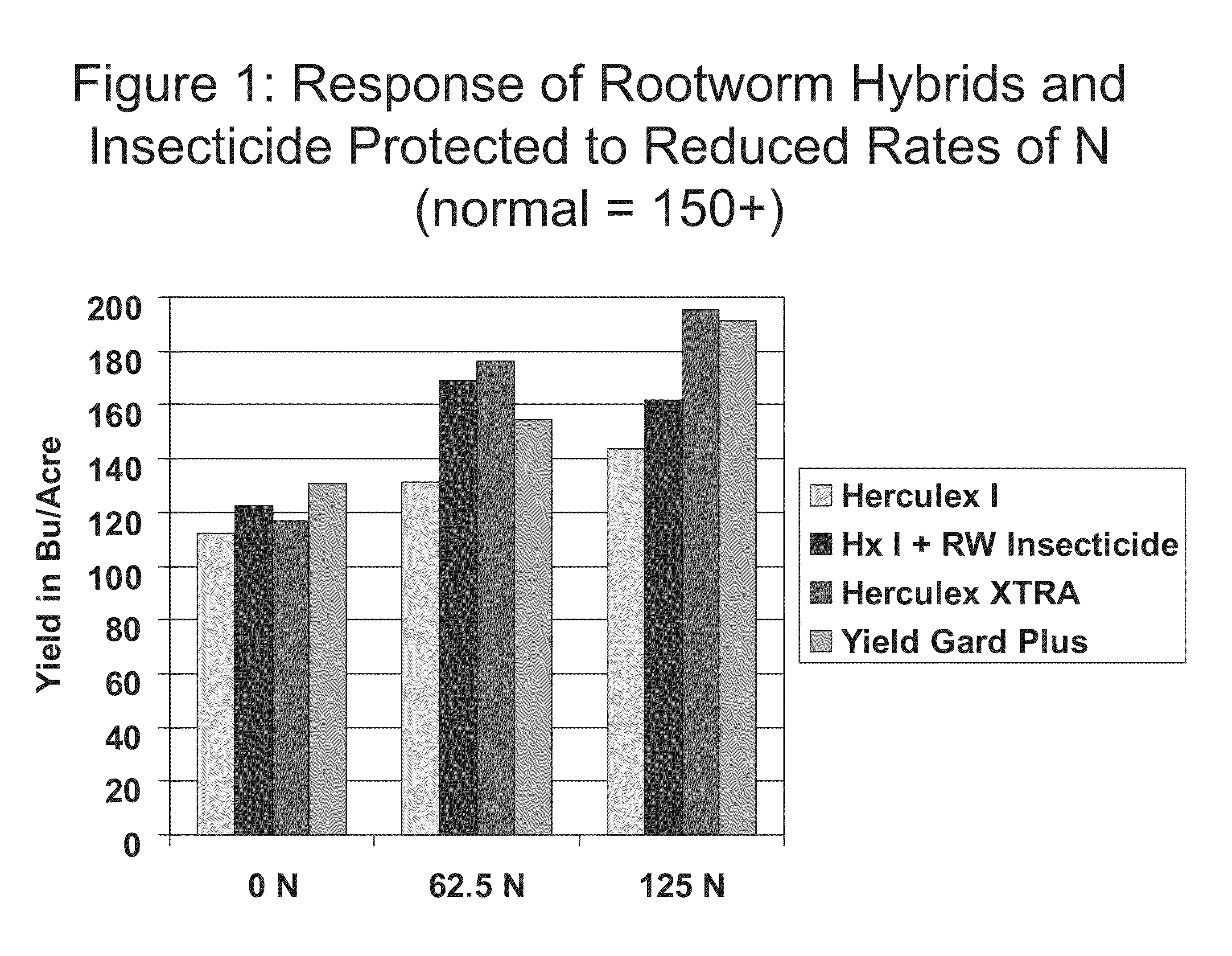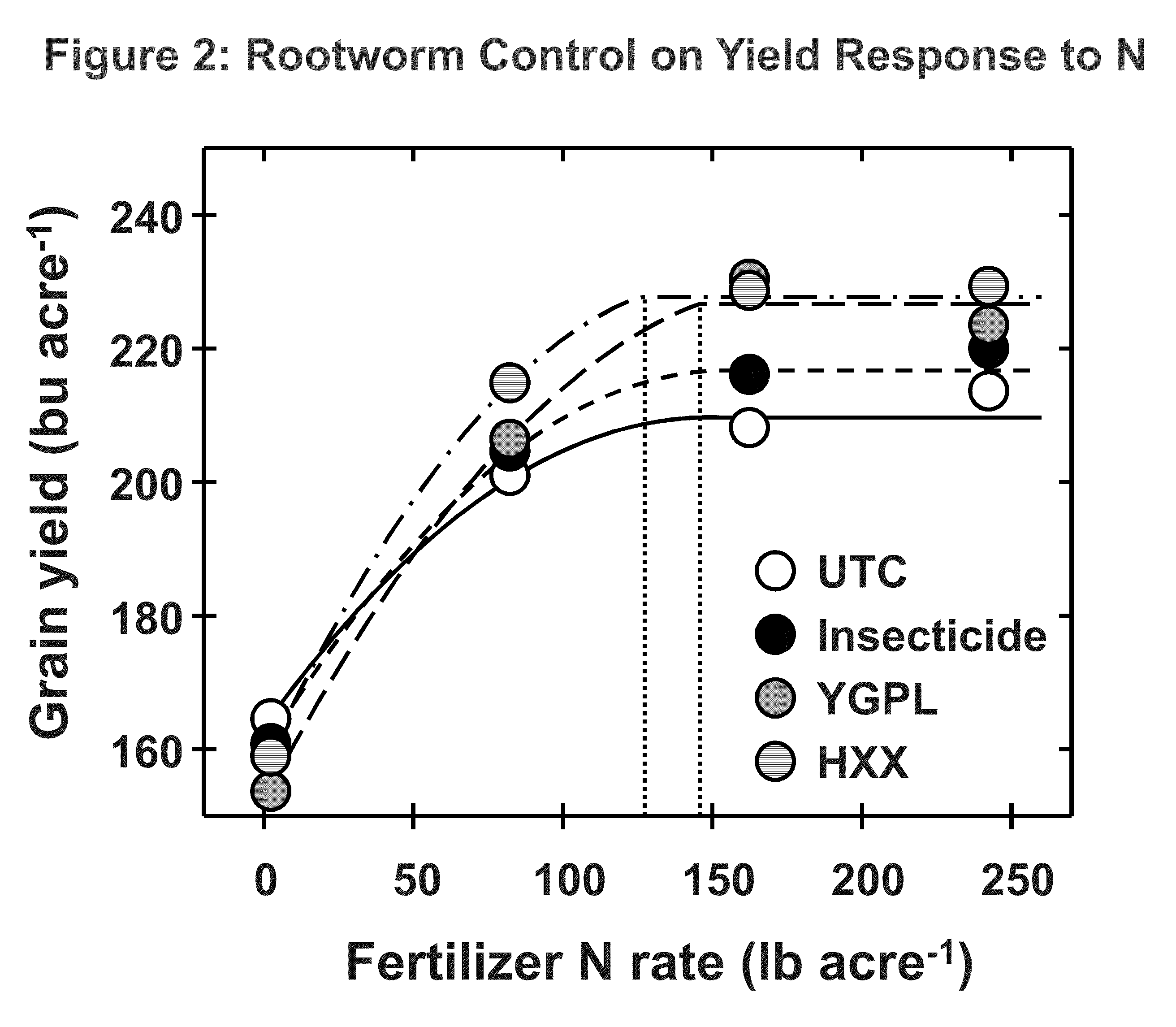Corn with transgenic insect protection traits utilized in combination with drought tolerance and/or reduced inputs particularly fertilizer
a technology of transgenic insect protection traits and corn, applied in biochemistry apparatus and processes, horticulture, agricultural tools and machines, etc., can solve problems such as negative environmental effects, and achieve the effect of more drought resistance and effective assimilation
- Summary
- Abstract
- Description
- Claims
- Application Information
AI Technical Summary
Benefits of technology
Problems solved by technology
Method used
Image
Examples
example 1
Reduced Nutrient Requirements
[0026]FIG. 1 relates to a trial conducted in Nebraska Herculex XTRA includes the cry34 / cry34 rootworm control genes, as well as the cry1F gene (for protecting the corn ear). FIG. 1 shows that rootworm control methods result in higher yields at N rates below the normal cropping practice of about 150 pounds per acre. It also shows that transgenic rootworm control is superior to chemical insecticides. In addition, it shows that the increased yield is not due to the Cry1F / lepidopteran-control component in Herculex XTRA. Herculex 1 (containing only the cry1F gene—not the cry34 / cry35 genes) thus serves as the control to make this point.
[0027]As illustrated by FIG. 2, in this study the Herculex XTRA hybrid was higher yielding at lower N rates than the other lines.
example 2
Illinois Drought Resistance Study—Year 1
[0028]Studies were conducted in Pesotum (Douglas County), Ill., which was “ground zero” for Soybean Variant Western Rootworm (WCRW). Heavy rootworm pressure and drought conditions in June & July were experienced.
[0029]Control plots (Force® 3G, Seed Traits) and untreated plots were all drought stressed. Their leaves were curled and grayish-green—exhibiting severe stress, and growth had stopped.
[0030]HERCULEX RW plants were green with leaves unfurled and were growing well in dry conditions.
[0031]As shown in FIG. 3, Herculex RW grew well under dry conditions. All other treatments showed significant drought stress.
[0032]FIG. 4 shows efficacy of Herculex RW against Soybean Variant WCRW. As shown in FIG. 4, Herculex RW provided significantly better protection than all other treatments (LSD, p≦0.05).
[0033]Findings and conclusions:[0034]Rootworm pressure varied from low to high depending on location[0035]Root protection by Herculex RW was unsurpassed ...
example 3
Resistance to Dry Conditions in Indiana—Year 1
[0037]This Example relates to a trial in Fowler, Ind., regarding plant protection by Herculex RW with early planting (May) under heavy Western Corn Rootworm pressure under dry conditions in year 1. See FIGS. 5A, 5B, and 5C. FIG. 5C shows “gooseneck” rating. (When plants lean due to insufficient root mass then try to right themselves, they end up with a curved stalk. Under certain conditions, plants may fall over and lodge on the ground due to rootworm feeding damage. Lodged and misshapen plants often pollinate poorly and can slow harvest.) Conclusions:[0038]CRW pressure is more severe when corn is planted early April to early May.[0039]Larvae are attracted to larger, newly developing root nodes, e.g., third node roots.[0040]Herculex RW provided highly significant root protection under early planting and heavy rootworm pressure.[0041]Herculex RW plants did not show symptoms of water stress or root lodging as did their non-Bt isogenic comp...
PUM
| Property | Measurement | Unit |
|---|---|---|
| insect-resistance | aaaaa | aaaaa |
| size | aaaaa | aaaaa |
| heavy pressure | aaaaa | aaaaa |
Abstract
Description
Claims
Application Information
 Login to View More
Login to View More - R&D
- Intellectual Property
- Life Sciences
- Materials
- Tech Scout
- Unparalleled Data Quality
- Higher Quality Content
- 60% Fewer Hallucinations
Browse by: Latest US Patents, China's latest patents, Technical Efficacy Thesaurus, Application Domain, Technology Topic, Popular Technical Reports.
© 2025 PatSnap. All rights reserved.Legal|Privacy policy|Modern Slavery Act Transparency Statement|Sitemap|About US| Contact US: help@patsnap.com



